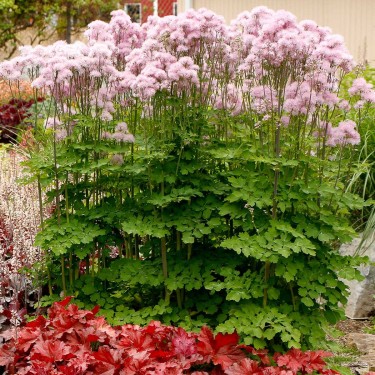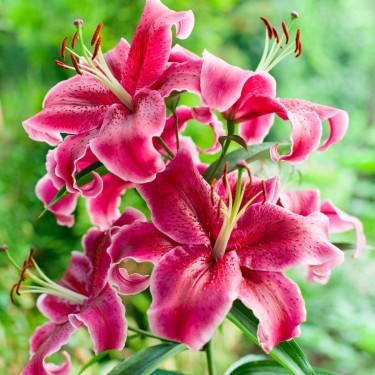Don't lament your dry soil — take advantage of it by growing these 10 distinctive perennials that are drought resistant.
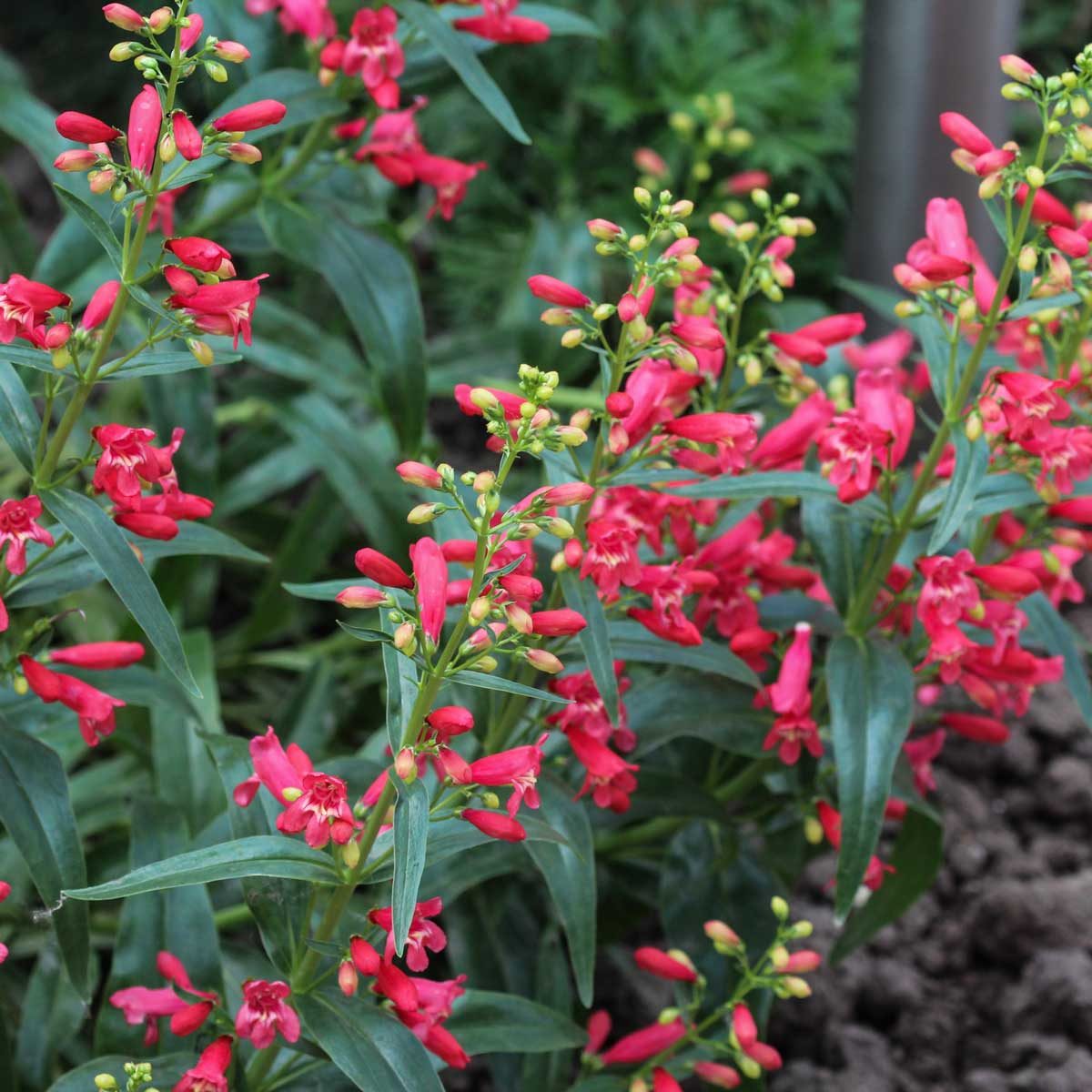
Penstemon
When you think of drought-resistant plants, cacti and succulents might be the first to come to mind. But perennials with showy blossoms like penstemon also fit the bill, easily withstanding drought, heat, wind and all-day sun.
You’ll find hummingbirds and bees enjoying the many native species of penstemon growing across U.S. Department of Agriculture Plant Hardiness Zones 3 through 10. Be sure to check the plant label for hardiness before you buy, because some varieties will be annuals where you live.
Longer blooming selections like ‘Red Rocks’ and those with dark foliage like ‘Dark Towers’ are typically easy to find at garden centers in the summertime.
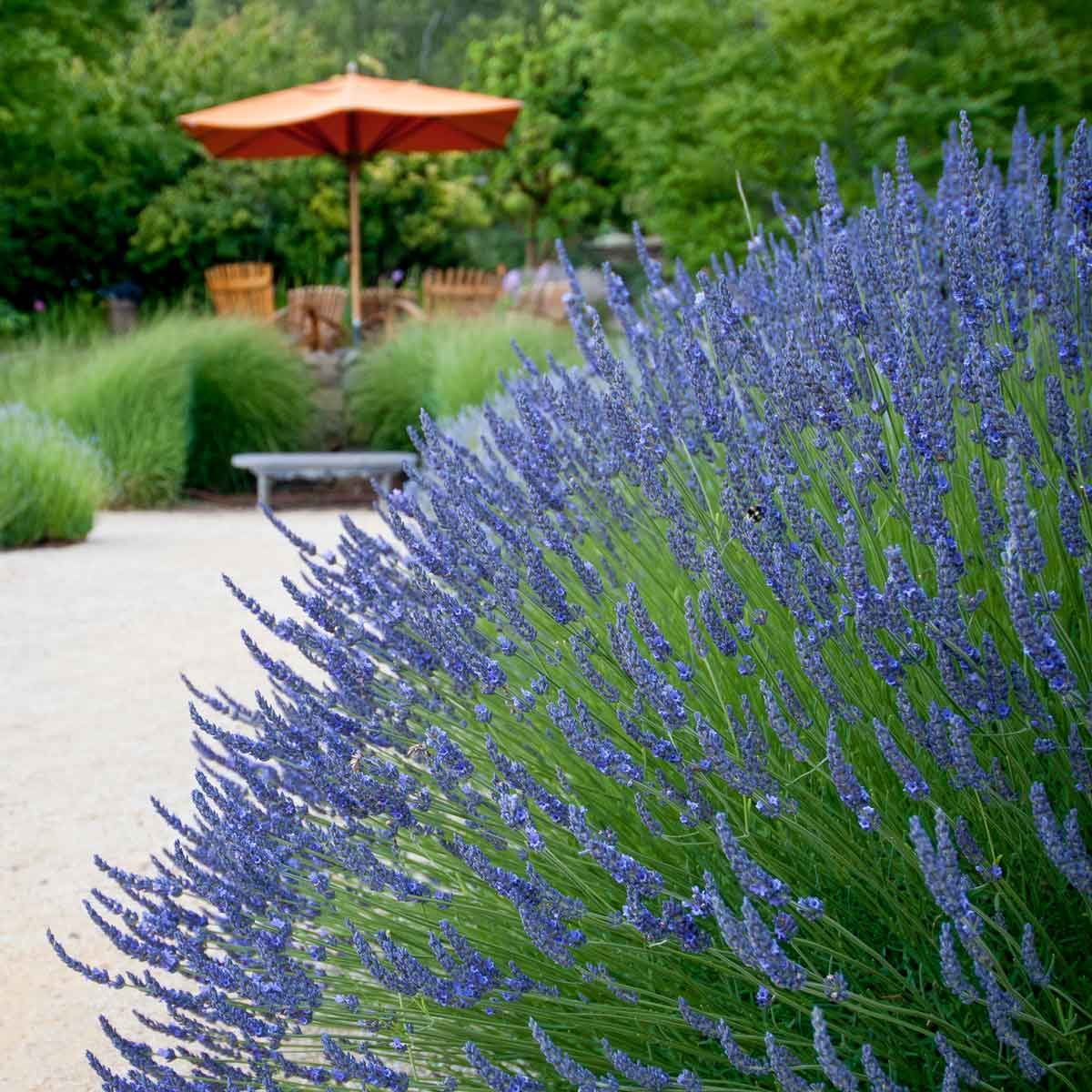
Lavender
If you would describe your garden as sunny, hot and dry, you have the perfect conditions for growing lavender. Notice how it’s thriving along the gravel path in this photo. Lots of water, fertilizer and shade would be detrimental to this perennial.
If you garden in clay soil, you’ll have the best luck with it in containers or in a raised bed where the soil drains freely and the roots won’t sit wet for long.
Lavender’s cold hardiness ranges from Zone 5 to 10, depending on which type you choose, and it is evergreen in all but the coldest climates. A quick shearing in spring will help the plant bounce back into bloom and last all summer.
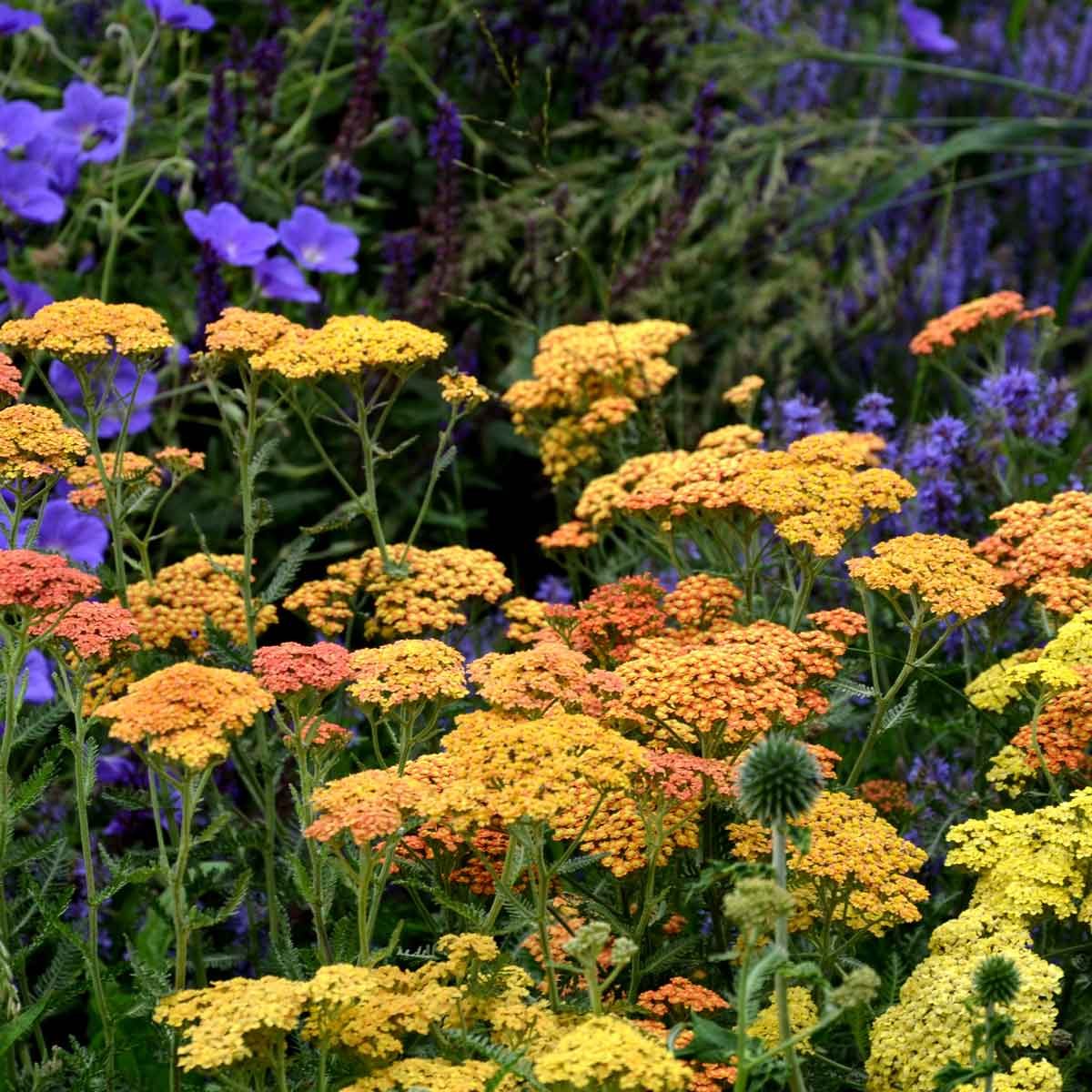
Yarrow
If you think yarrow (Achillea) is too common, wait until you see how undemanding and long blooming it is. You’re going to want one in every color.
You’ll find this drought-resistant perennial flowering in shades of yellow, orange, red, pink and white in sunny gardens across Zones 3 through 8. The flowers of most varieties like ‘Terracotta,’ pictured here, will be darkest when they first open and lighten as they age.
When you plant yarrow, there’s no need to enrich your soil with compost or other amendments. It grows better in less-rich and drier soils. Well-drained soil is necessary, especially in winter, to prevent its roots from rotting. Try planting a few together in a group to make a colorful splash in your summer landscape.
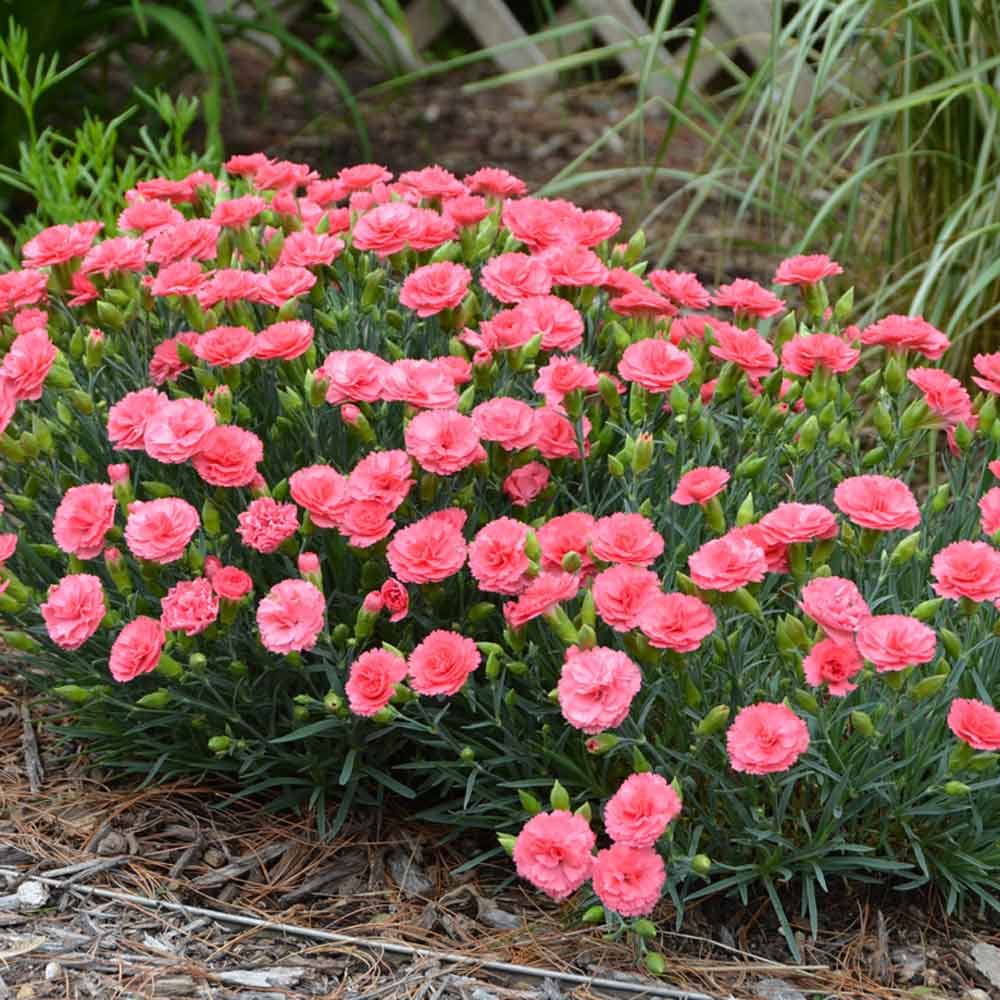
Pinks
You’ll know when the Dianthus, commonly called pinks, is in bloom because you’ll easily spot its vividly colored blossoms from the curb and catch its sweet fragrance as you walk by.
Pinks can bear single or double carnation-like flowers in shades of pink, coral, magenta, red, white or bicolor patterns. The biggest show of blooms will come during the cooler late spring to early summer months, but a quick shearing will help the plant send up more flowers in the fall.
No matter which color you choose, you can count on this tough little perennial to handle short periods of drought without skipping a beat. It grows best in full sun to light shade in Zones 4 to 9. Pictured here is ‘Classic Coral,’ a delightfully fragrant, double-flowered cultivar.
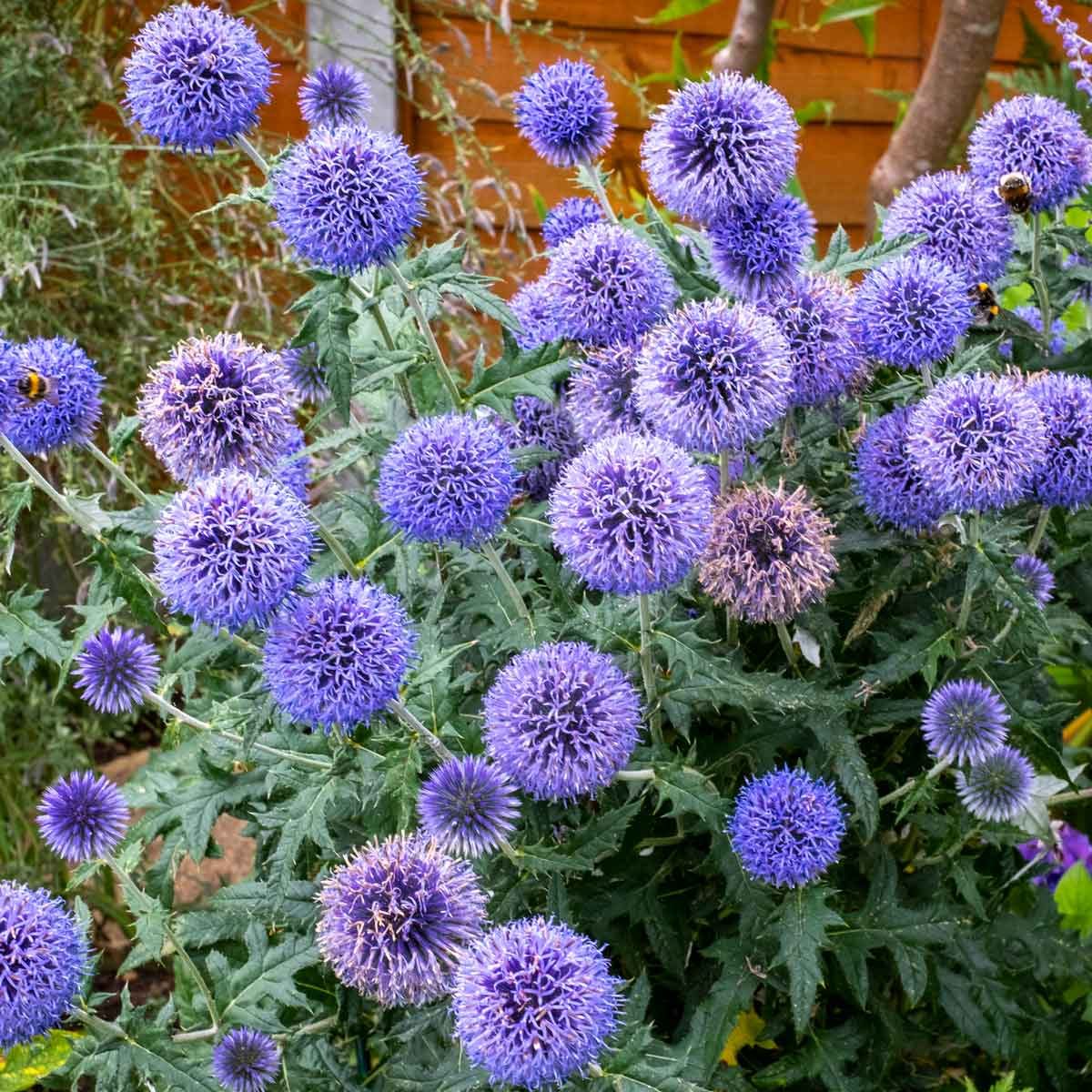
Globe Thistle
Don’t let a plant’s common name prevent you from trying what could become one of your new favorites. Globe thistle (Echinops) might sound similar to the noxious weed (Cirsium), but this showy perennial isn’t invasive. It handles drought conditions with ease and blooms nearly all summer in full sun in Zones 3 through 8.
Silvery blue, satellite-like flowers top the stiff, silvery stems that are ideal in fresh or dried bouquets because they are so long-lasting. Bees and butterflies enjoy them too, so plant a few extra for you and the pollinators to enjoy.
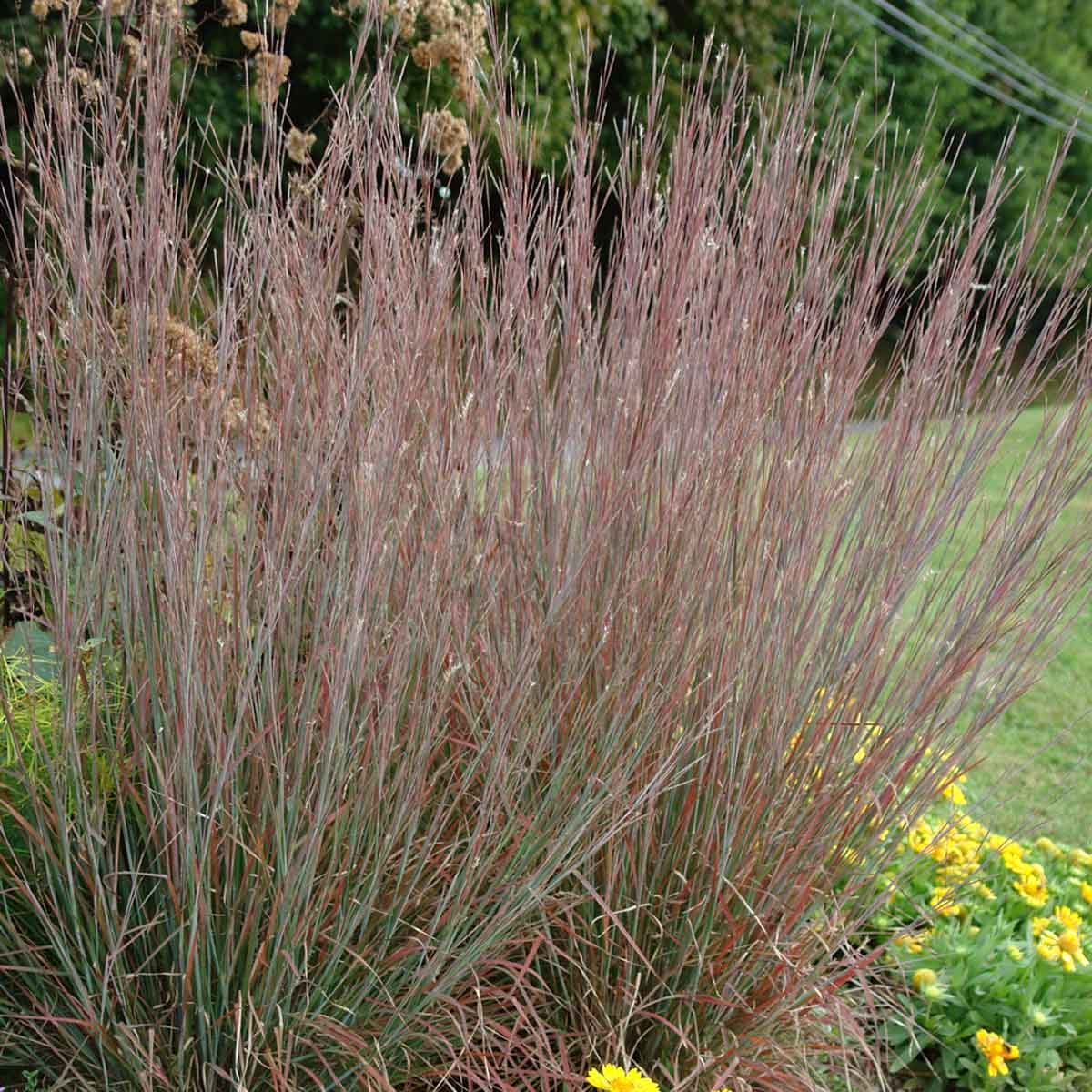
Native Grasses
If you’re looking for low-maintenance, drought-resistant perennials for your landscape, consider planting native ornamental grasseslike little bluestem (Schizachyrium ‘Standing Ovation,’ pictured here), switch grass (Panicum), sedges (Carex) or prairie dropseed (Sporobolus). You’ll have good luck with those you find at your local garden center.
These grasses are great at filling a lot of space for not a lot of money. Plus, once established, they only need to be watered during prolonged periods of drought. Simply trim them back once per year in early spring, and then sit back and enjoy their natural beauty for the rest of the season.
Bonus: Native grasses are an important source of food and shelter for songbirds.
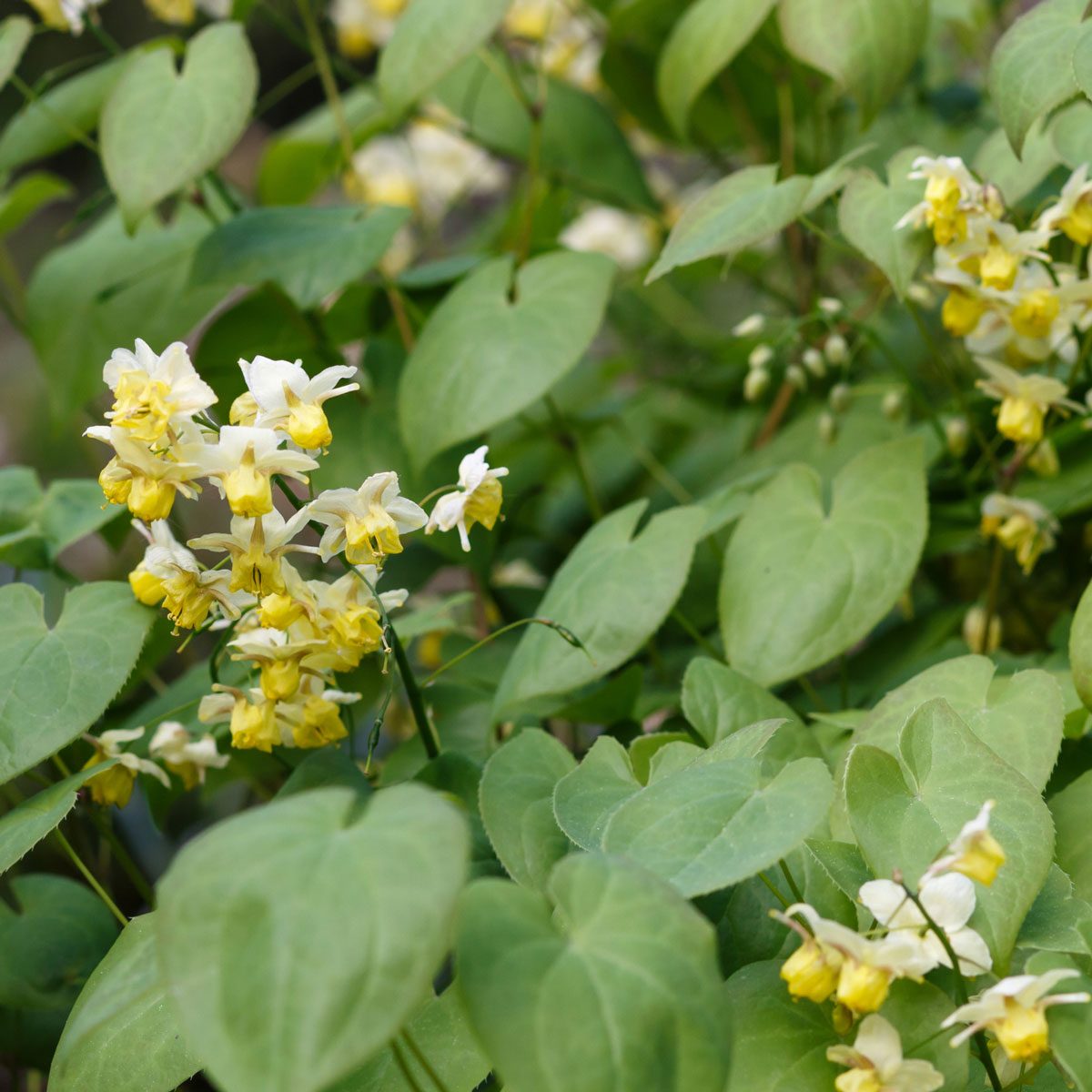
Epimedium
Here’s another beautiful, tough-as-nails perennial with an off-putting common name: barrenwort, botanically known as Epimedium. It’s an ideal small-scale groundcover that shines in partial to full shade, remaining attractive even in dry shade.
You’ll want to grow Epimedium for its lovely heart-shaped foliage that’s often adorned with bright red edges or purple speckles when it first unfurls. Fleeting yellow, white or pink blossoms are a bonus in mid- to late-spring. Fortunately, this is one of few perennials that deer and rabbits tend to ignore, making it a carefree perennial for Zones 5 through 8.
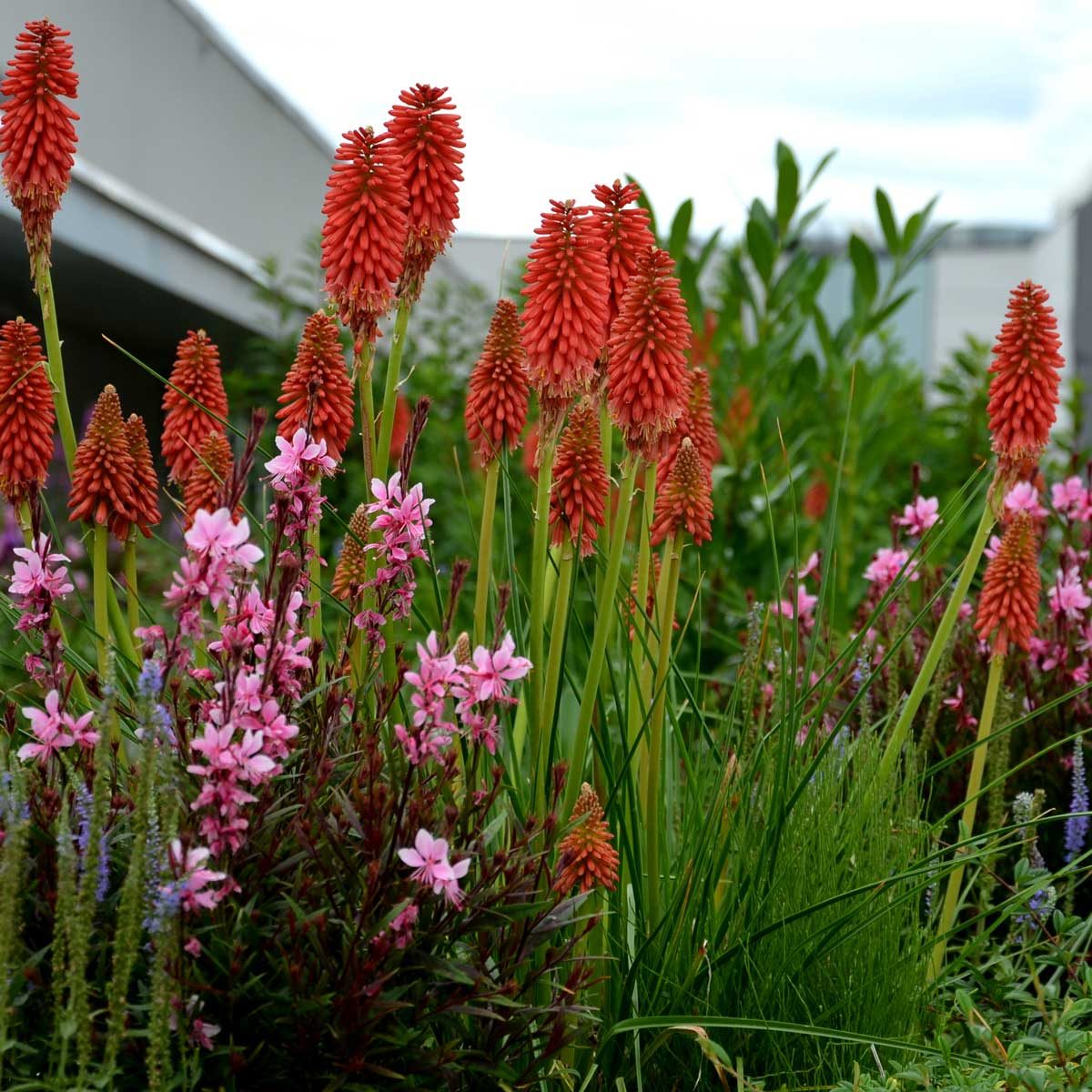
Red Hot Poker
You might mistake Kniphofia, commonly known as red hot poker, for an ornamental grass before it blooms. Its narrow, rugged foliage is durable even in times of drought and remains evergreen in most climates.
Beginning in early summer, tall stalks topped with poker-shaped flower panicles bloom in shades of red, orange, gold or cream. Plant this whimsical perennial where you’ll get to enjoy the parade of passing hummingbirds up close.
Look for reblooming varieties like ‘Papaya Popsicle’ or ‘Solar Flare’ for a repeat show all summer in Zones 6 through 9. Red hot pokers are pictured here with Gaura, another long-blooming, drought-resistant, sun-loving perennial for Zones 5 through 8.
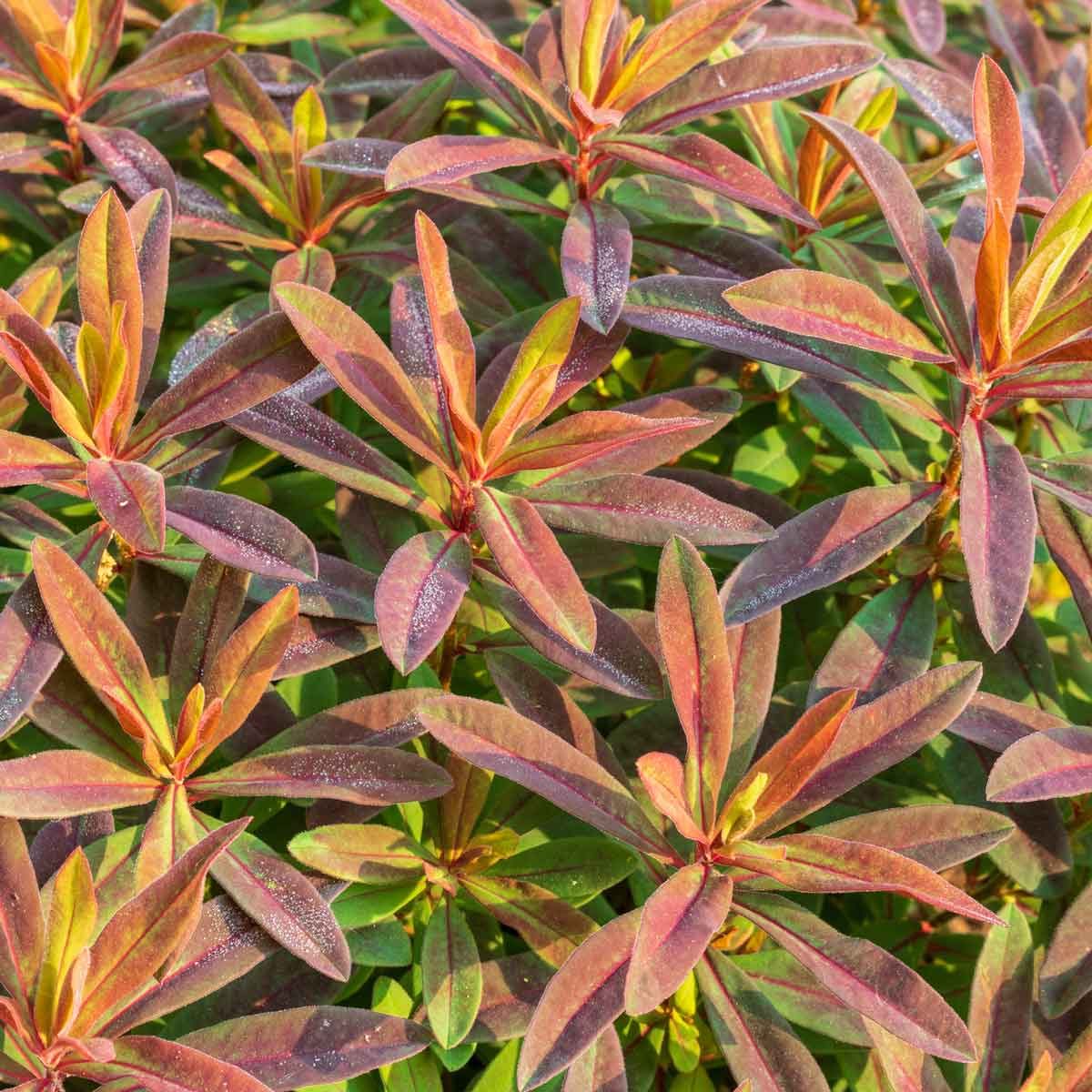
Cushion Spurge
You’ll find the most stunning specimens of cushion spurge (Euphorbia polychroma) growing in dry, nutrient-deficient soils without a lick of shade in sight. Those aren’t ideal conditions for many perennials, but for this beauty, it’s divine.
The cultivar pictured here is ‘Bonfire,’ which dazzles with deep purple, scarlet and orange foliage that persists all season until it transforms into a blazing red mass in the fall.
Expect most types of cushion spurge to grow about a foot tall and spread up to three feet wide in Zones 5 through 9. Full sun and well-drained soil are a must for growing this perennial successfully.
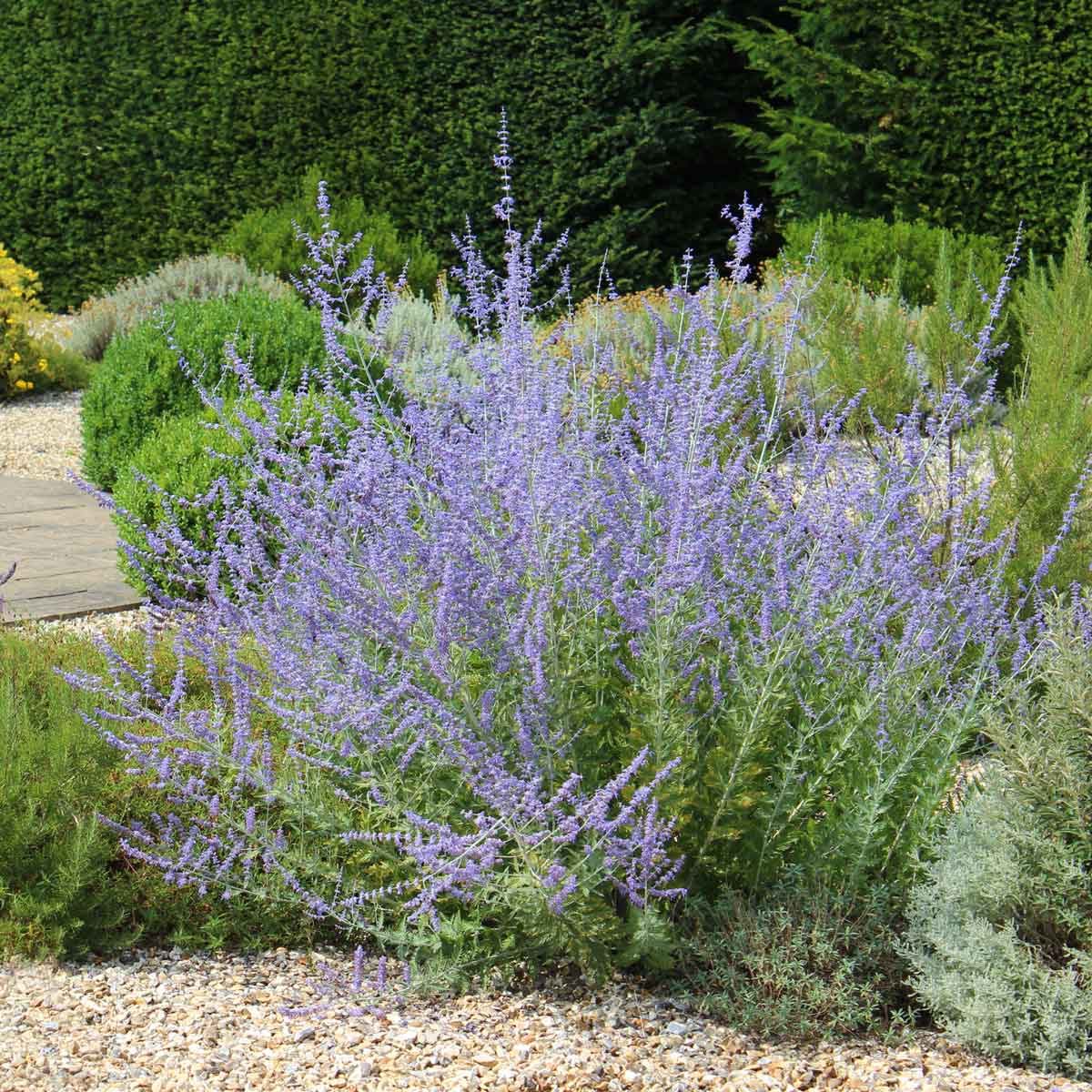
Russian Sage
As summer begins to wane, you’ll be glad you planted Russian sage (Perovskia). Beginning in mid- to late-summer, you’ll notice large flower panicles forming on the top half of its silvery green stems. Pollinating bees, butterflies and hummingbirds will quickly spot the bright periwinkle blue blossoms and enjoy them until the first frost arrives.
This cold-hardy yet heat-tolerant perennial thrives in drier, well-drained soils and full sun in Zones 4 through 9. Other than an occasional drink during prolonged periods of drought, little maintenance is required.

